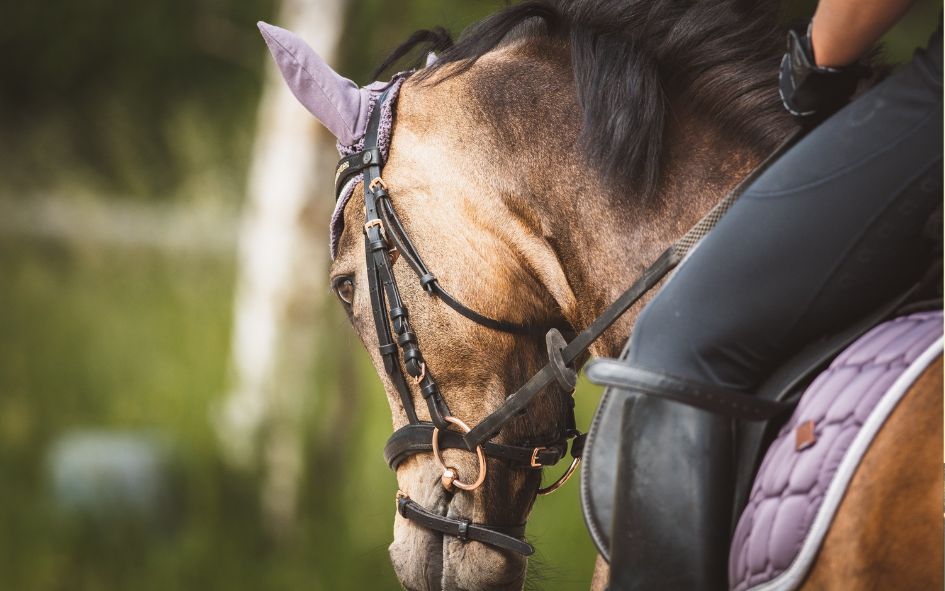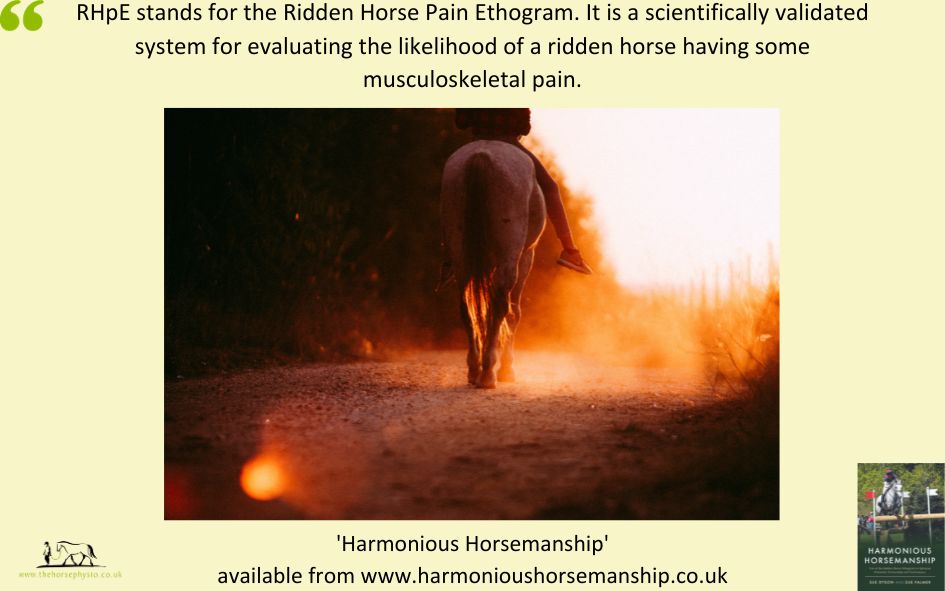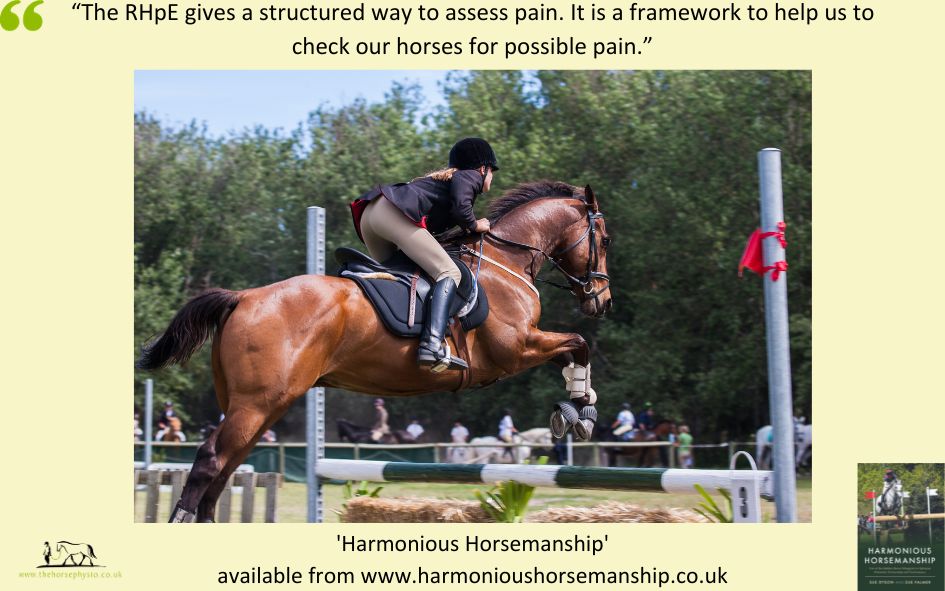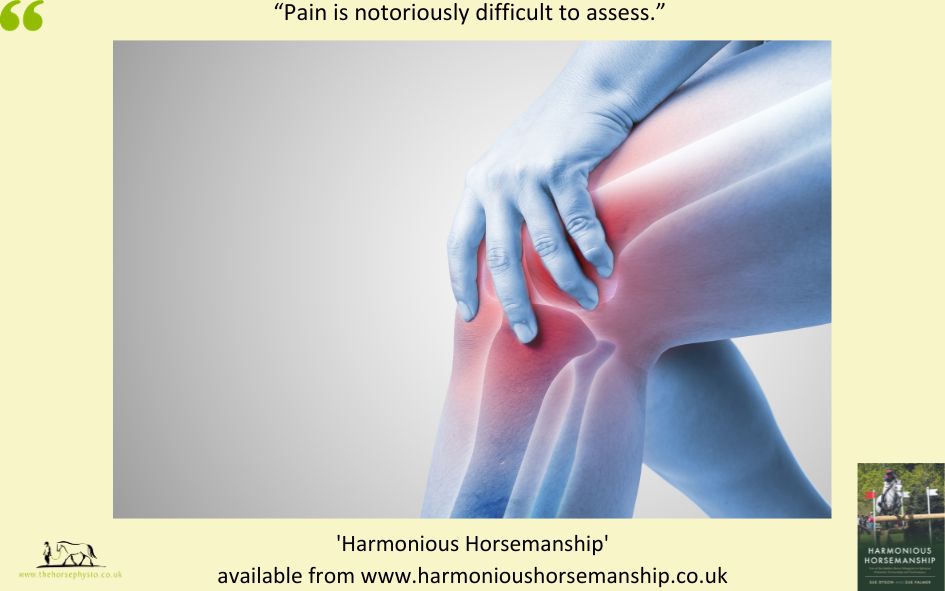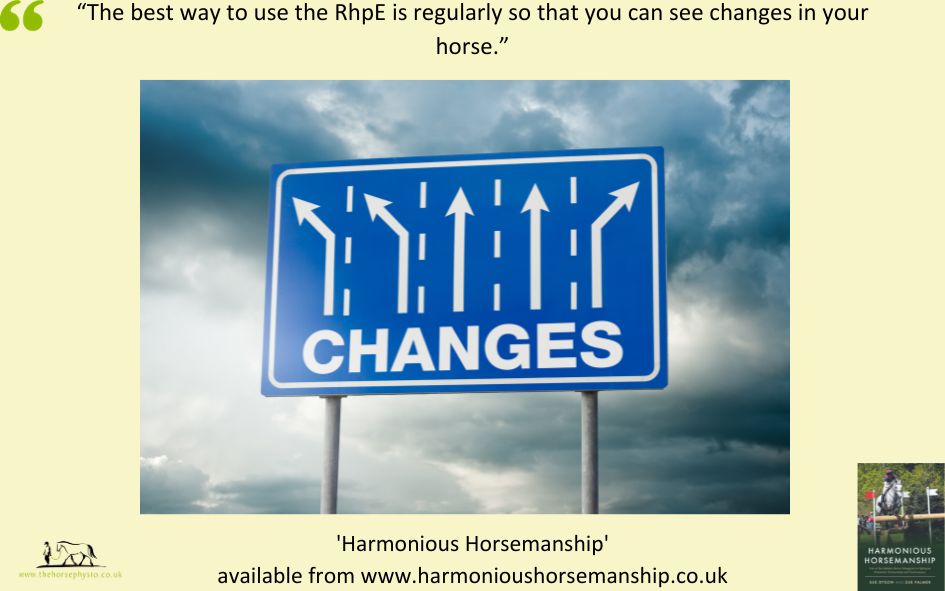What is RHpE?
RHpE stands for the Ridden Horse Pain Ethogram. It is a scientifically validated system for evaluating the likelihood of a ridden horse having some musculoskeletal pain. Dr Sue Dyson developed it, resulting from many years of painstaking research to investigate and assess the best behaviours to include in the RHpE. There are 24 behaviours in the ethogram, compiled from an original 117 behaviours seen in ridden horses. These 24 behaviours were considered the most reflective of pain; most were ten times more likely to be seen in horses with musculoskeletal problems than in sound horses. When evaluated using the RHpE, horses with a score of greater than or equal to 8/24 are more likely to be in pain, which warrants further investigation. This is not to say that a horse with a score of 7/24 isn’t in pain, and you should always trust your instincts about your horse.
Why do we need it?
Horses can’t speak, which is part of why our relationship with them is so magical. When the connection and communication work, there is no feeling better than communicating with an animal without words. We come up against problems when we can’t understand what the horse is trying to tell us. We seem better at reading enthusiastic and happy emotions than negative ones. Many people will tell you that their horse loves to canter up a particular field because they can tell by the excited prick of his ears. But if a horse puts his ears back when we ask for canter, we don’t read this as the horse being unhappy; we are more likely to label him as naughty, not understanding, or difficult. Our understanding of horses has improved over the years, and more and more people will take the time to try and understand what their horse is trying to tell them. The problem is that it tends to be a one-off, trial-and-error approach. Vets won’t just nerve-block random legs because you think there may be a problem; they need more proof. The RHpE gives a structured way to assess pain. It is a framework to help us to check our horses for possible pain.
The difficulties of assessing pain
Pain is notoriously difficult to assess. Doctors are renowned for asking questions such as “Do you have a high pain tolerance?” but pain is subjective; we can’t possibly know how other people experience pain. NICE offers the following guidance for pain assessments in humans: “Ask about the intensity of pain and if this has changed over time — consider using a standardised intensity rating scale (such as a verbal rating scale, a visual analogue scale, or a numerical rating scale, for example, the British Pain Society numerical pain rating scale).”The RhpE is effectively doing what NICE recommends. It uses a standardised visual scale for assessing pain. In people, we need their description and assessment of their pain; in horses, we need to evaluate their actions to give us the information.
How can I use it to help my horse?
The best way to use the RhpE is regularly so that you can see changes in your horse. Video your horse, or ask a friend to do it so that you can capture the horse from different angles. You could video their horse in exchange. Watch the video back when you have plenty of time; this way, you can pause the video, check the angles of the head and neck, see the tracking alignment of the legs, and other crucial pieces of information. It’s a good idea to write down your results and keep them to reference them for any changes.
I’m interested – how can I learn more?
The RHpE is a fantastic tool that you can use to help your horse throughout his working life. Sue Dyson and Sue Palmer wrote the book Harmonship Horsemanship, which gives detailed insight into how the RHpE evolved and developed. Using thoughtful case studies, it shows how powerful the RHpE can be and how some owners go above and beyond to get to the bottom of their horse’s behaviour. The 24 behaviours of the RHpE are laid out in the book, which explains how to use the RHpE to help your horse. As well as the book, Sue Dyson and Sue Palmer have created the accompanying website Harmonious Horsemanship to support and promote the book; there are further resources to help you give your horse the best life. Head over to www.hamonioushorsemanship.co.uk to learn more and to order your copy of this groundbreaking book.
